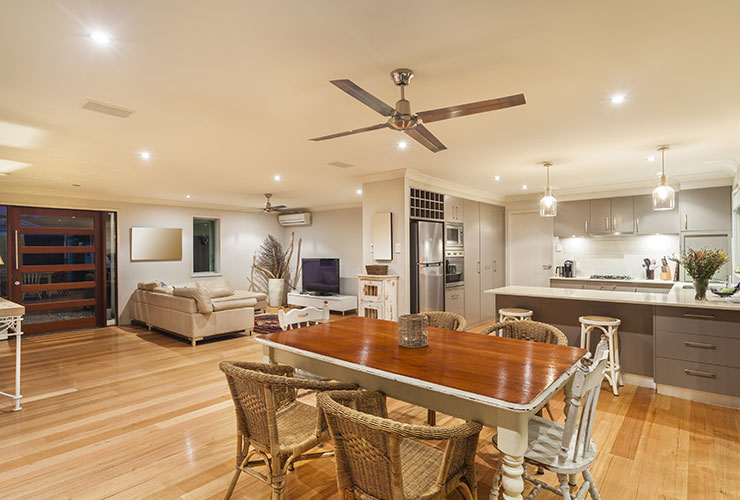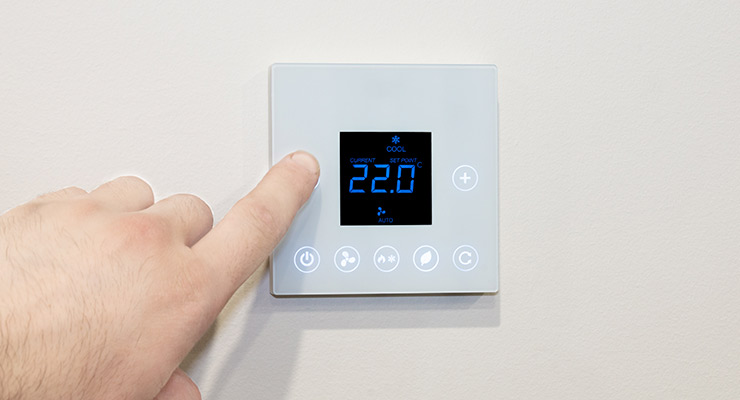
Fast read
Thinking about where to put your ceiling fan is crucial to make sure it works well. The fan should have adequate air space above it.
The fan should be at least 2.4 meters above the floor and at least 400 mm away from smoke detectors. The fan size, room use, room layout, and lighting should also be considered. When determining the best location for the fan.
Having a ceiling fan installed by a professional is recommended. This is because in Australia, they've got some pretty strict rules about how things need to be installed.
How important is the placement of my ceiling fan?
I’m sure you have heard how cost-effective installing a ceiling fan can be. As they are cheaper to run than air conditioning and at the right time of the year, that’s all you need to make the room comfortable. However, if you buy the wrong size ceiling fan or install it in the wrong location, you may as well have just thrown money in the bin.
A ceiling fan to operate to its full potential requires adequate air space above the unit and should not be mounted too close to the ceiling. Otherwise, it cannot circulate the air effectively. Instead, it is supposed to draw hot air from above the fan (the principle of hot air rises) and surroundings through the fan and down in a circular motion.
It must also be mounted 2.4m above the floor to prevent injuries. As well as a minimum of 400 mm away from smoke detectors. In a cathedral ceiling, the fan can be mounted with extension rods to bring it further down to an optimal height. This is because it is ineffective if it is too far from the ground.
Please also take into consideration that a professional should only install ceiling fans. Not only because it ensures it is done correctly but because Australia also enforces strict regulations on electrical wiring.
The size of the ceiling fan can affect its effectiveness
A ceiling fan has an effect over a specific limited area. Depending on the blades’ diameter, the ceiling’s height, and the blades’ pitch. The higher the pitch, the more air movement. The blade pitch varies between 8 and 15 degrees.
The blade pitch can also affect a ceiling fan’s noise level; the higher the pitch and faster the speed, the stronger the noise.
Suppose you want to feel the ceiling fan’s effect further away. Then, especially in a large room, you might need to install a fan with a longer blade and larger motor or install a second fan.
The ceiling fan location also depends significantly on the access to power and how to get the electrical cable to the connection point.
If you have a concrete ceiling, installing the cabling unobtrusive is much more challenging. This means you might want to choose the ceiling fan location based on where the light fitting is to access any available power from that spot. In this case, for example, you could remove the light and get a fan with a light in it.
Most modern LED lights are integral units with a fan. In case the LED light needs replacement, please be aware that the warranty could be void if you do not get a qualified electrician to complete this work.

Critical considerations for the best ceiling fan location
A few other things to think about when figuring out the best ceiling fan location are:
- The use of the room
- The room layout
- The room’s lighting
Room use
To determine the best ceiling fan location. You should first understand how they work. They work by speeding up the heat transfer processes of convection and evaporation. From this information, fans are believed to be most valuable when placed where people will congregate or spend extended periods.
For example, the best ceiling fan location in the dining room would be over the dinner table. In the living room, the best ceiling fan location would be over a group of chairs or the couch in the lounge, where everyone will spend time.
Room layout
Rooms in your house are often off-centre because of other significant features such as doorways or fireplaces. Therefore, you may need to place your ceiling fan off-centre to allow for continuity. Simply put, ensure you aren’t centring your fan if your room and its layout are off-centre, as it will look odd and be less energy efficient.
Lighting
Imagine if your ceiling fan location is in a position that overlaps with your current lighting. This can create a strobe effect and make you feel like you are at the dance club 24/7. That’s why you have to think about lighting when figuring out the best ceiling fan location. To ensure this overlap and strobe effect does not occur.
Please note that a DC ceiling fan is usually quieter than an AC fan. Hence it could be a better option in a bedroom. But, of course, all these factors will be considered when you get a professional to install your ceiling fan.
Finally, as with all electrical work. We strongly recommend booking a qualified electrician.


